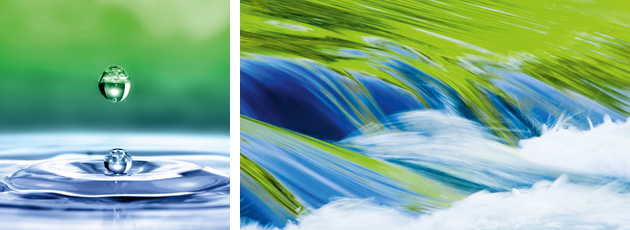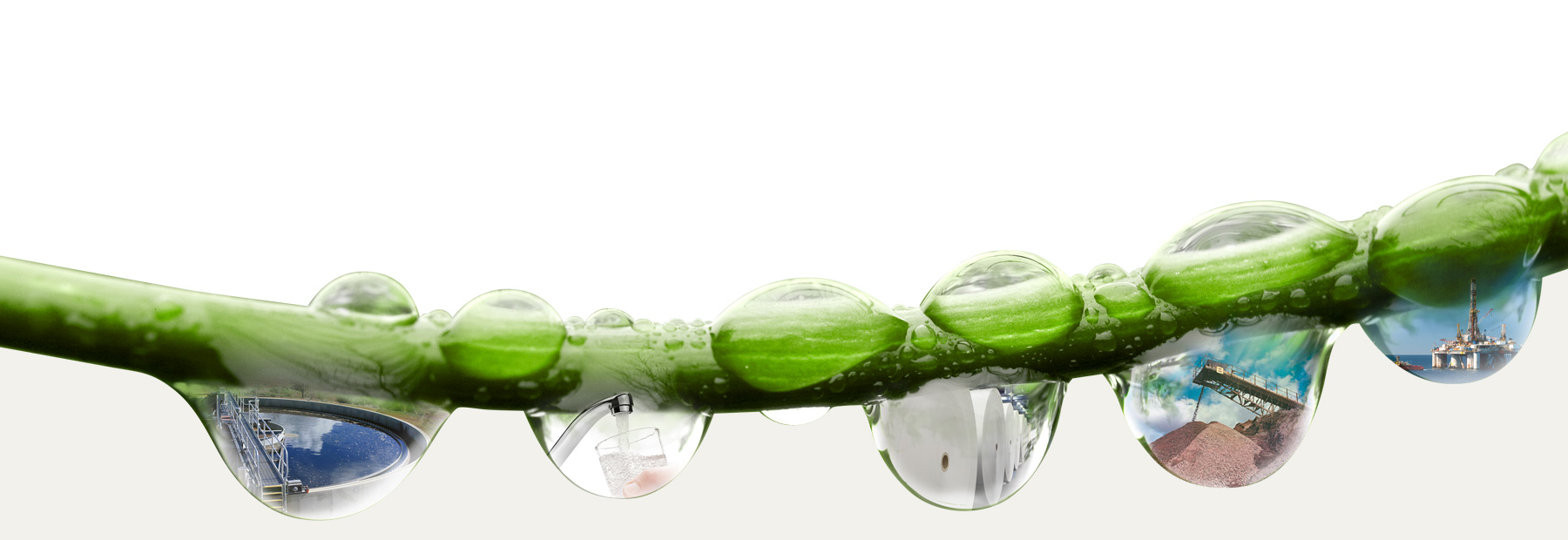Acrylamide is the key monomer molecule in a broad portfolio of different polyacrylamide (PAM) polymers. According to their physical-chemical properties, they offer environmental solutions with high impact. Acrylamide, which can be easily produced, has unique chemical features which allow the synthesis of polymers of high molecular weight, possessing unique properties.
PAMs are the solution to high quality drinking water and the efficient cleaning of waste water. They enable the efficient and environmentally favourable production of paper and support new opportunities to enhance the efficiency of oilfield and mining applications and, as a consequence, minimize environmental pollution.
PAMs are produced from acrylamide as the sole monomer, in order to produce a homopolymer. Copolymers are produced by combining different types of functionalized monomers giving them special properties. Acrylamide is the “neutral” key monomer enabling the production of these speciality polymers. The compounds are usually water soluble polymers possessing a cationic charge or an anionic charge to varying degrees or are non-ionic, possessing no charge at all. Furthermore, the molecular weight can be adjusted according to the requirement of the respective application.
A characteristic of all PAM polymers is their high efficacy in their respective applications.

Acrylamide is the key component in the PAM production technology. It is easy to produce and if correctly handled, does not bear a significant risk.
The unique properties of acrylamide arise from the following combination of physical-chemical characteristics: It is polar, therefore highly water soluble. It is non-ionic and has a stable amide group with strong hydrogen bridging potential with the oxygen as acceptor and the “amine” as donor, thus enabling interaction with a variety of polar groups.
The reactivity of the double bond enables acrylamide to form polymers of high molecular weight. Its stable carbon-carbon backbones give the required stability in the various applications.
This flexibility allows the generation of a multitude of customized unique polymers. The polymer production processes are easily controlled, and economically viable. This applies also to the synthesis of acrylamide itself for which chemical and biotechnological procedures are available.
There is no significant exposure to acrylamide from PAM based applications. Polyacrylamide itself is not classified for health effects. In PAMs, acrylamide molecules react to form the repeating units in the polymer chain, thus surrendering the typical double bond related reactivity associated with the acrylamide monomer. Therefore, the properties of any polymer which carries “acrylamide” in its name have to be regarded as completely
different from the properties of the monomer. PAMs contain monomer residues which have to be taken into consideration during their safety assessment.
Acrylamide has undergone extensive risk assessment, triggered by both authorities and industry. Appropriate measures to ensure safety of the applications are established.

Acrylamide enables PAM based technologies to be used for VARIOUS environmentally beneficial applications.






